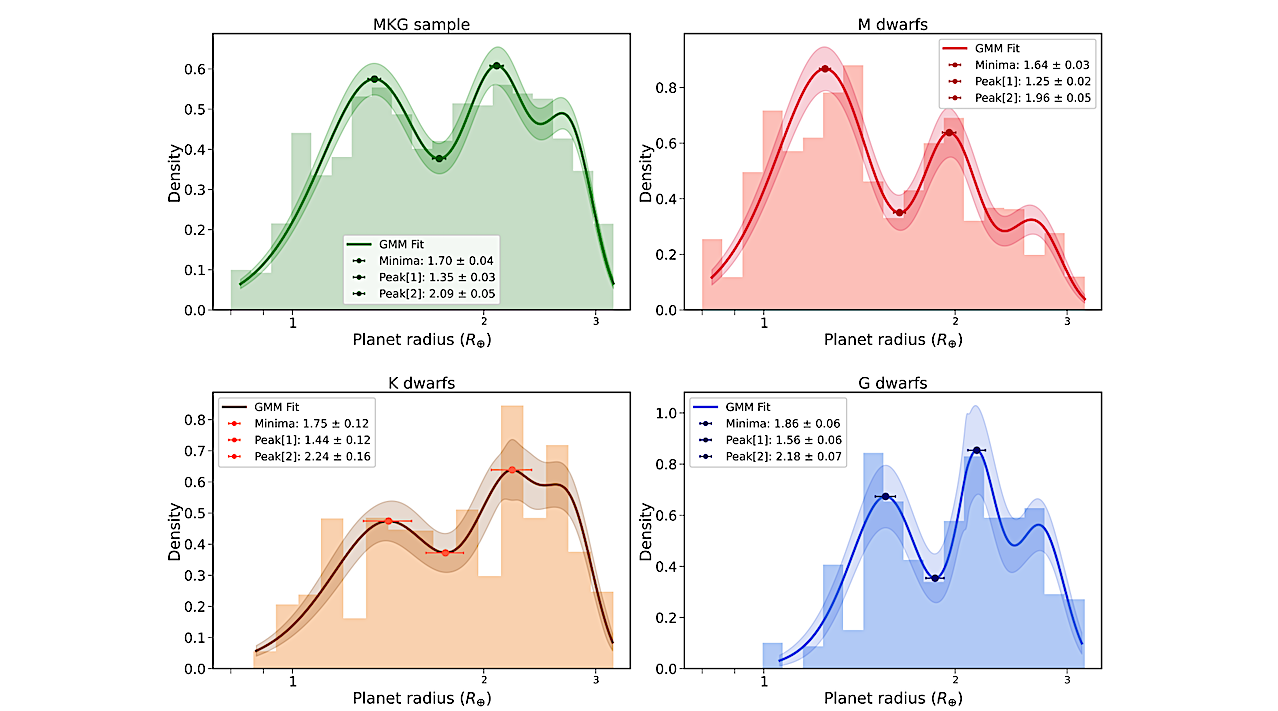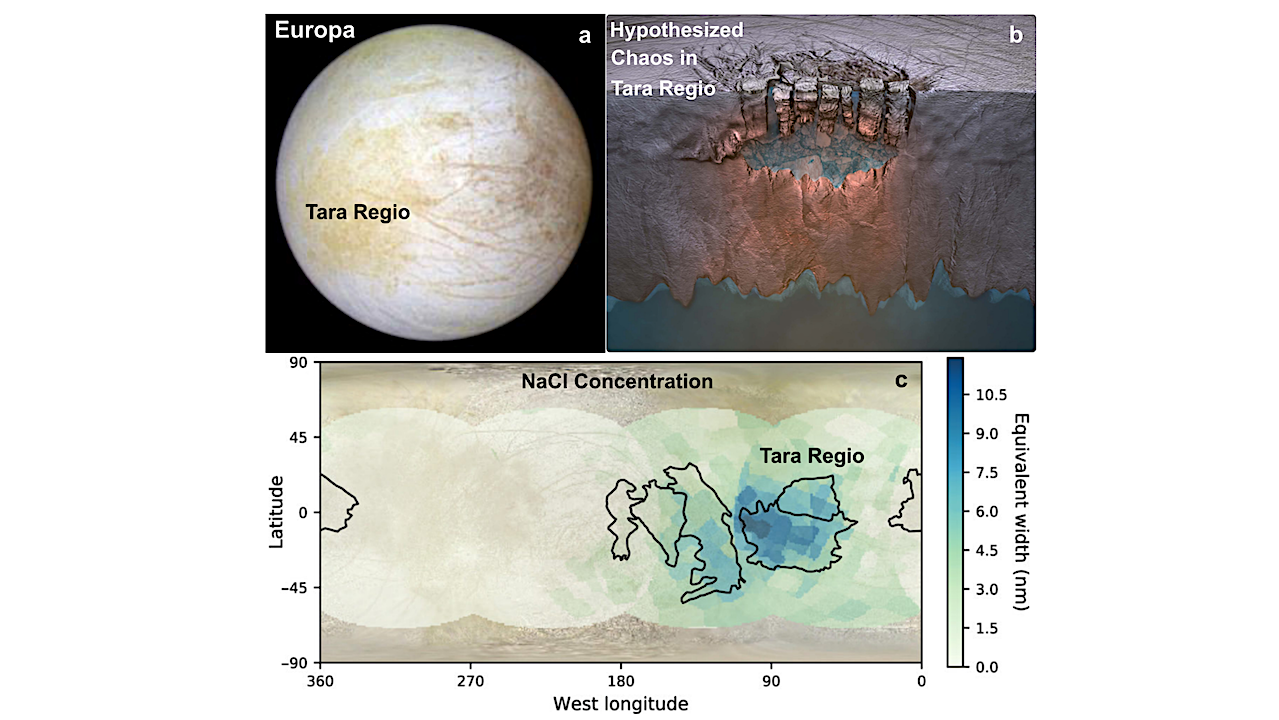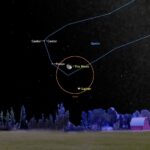Now Reading: The Orbital Eccentricity-Radius Relation For Planets Orbiting M Dwarfs
-
01
The Orbital Eccentricity-Radius Relation For Planets Orbiting M Dwarfs
The Orbital Eccentricity-Radius Relation For Planets Orbiting M Dwarfs
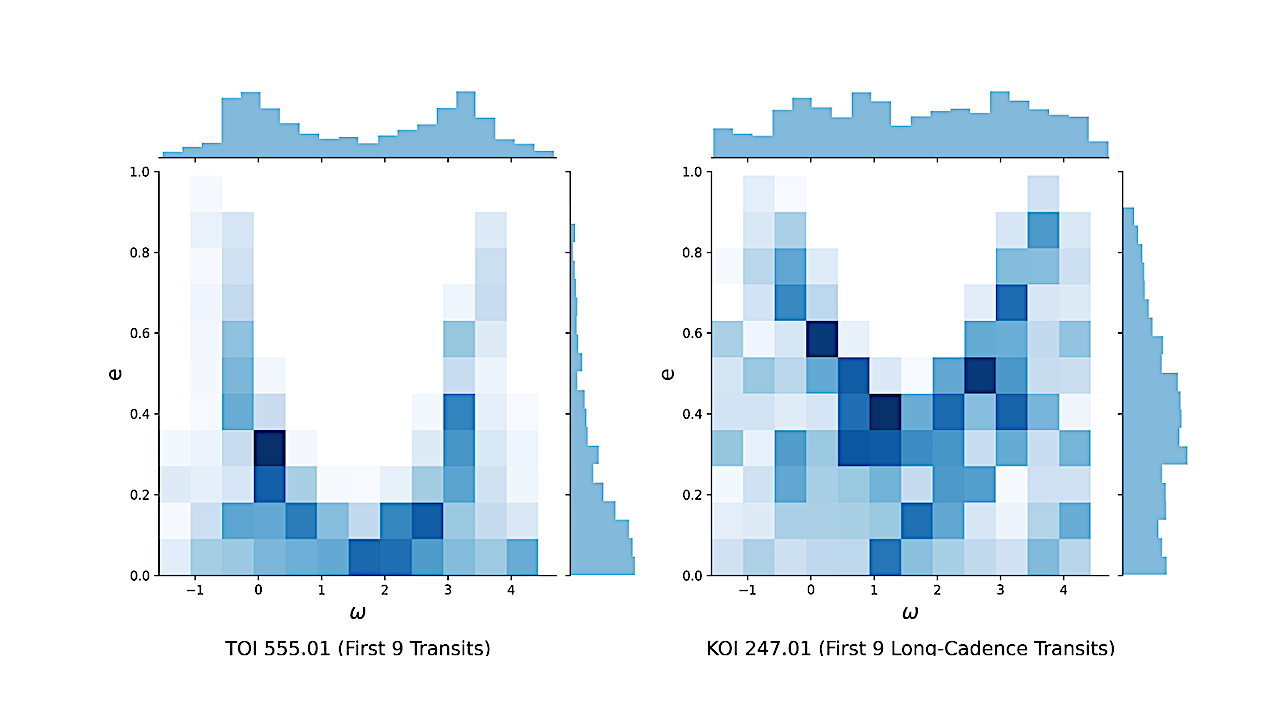
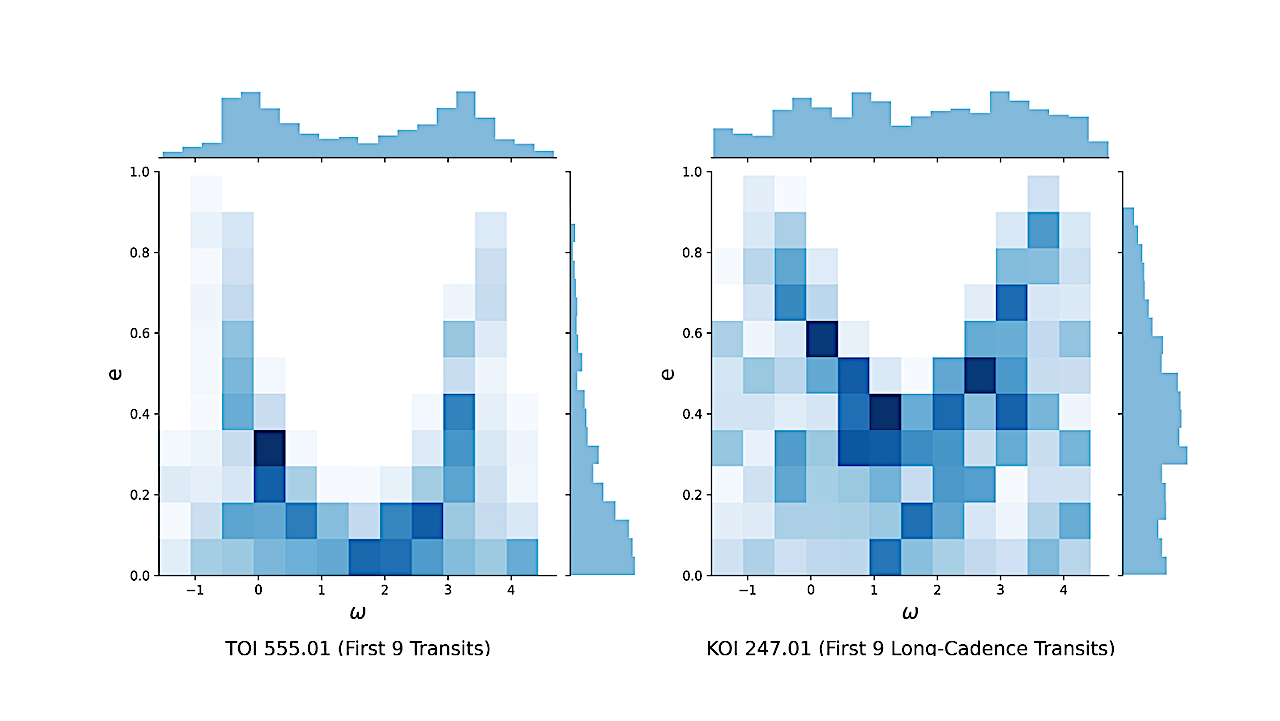
Left: Eccentricity posterior generated by fitting the first nine chronological transits of TOI 555.01. Right: Eccentricity posterior generated by fitting the first nine chronological long-cadence transits of KOI 247.01. — astro-ph.EP
The orbital eccentricity-radius relation for small planets is indicative of the predominant dynamical sculpting processes during late-stage orbital evolution.
Previous studies have shown that planets orbiting Sun-like stars exhibit an eccentricity-radius trend such that larger planets have higher orbital eccentricities, and that radius gap planets may have modestly higher orbital eccentricities than planets on either side of the radius gap.
In this work, we investigate the trend for a sample of smaller M dwarf stars. For a sample of 236 single- and multi-transit confirmed planets or candidates discovered by the TESS and Kepler missions, we constrain orbital eccentricity for each planet from the transit photometry together with a stellar density prior.
We investigate the binned eccentricity-planet radius relation for the combined planet sample and present evidence for a positive eccentricity-radius relationship with elevated eccentricities for planets larger than 3.5 R_earth, similar to the trend for planets orbiting Sun-like stars. We find modest evidence that single-transit M dwarf planets near the radius gap exhibit higher eccentricity, consistent with trends for Sun-like stars.
However, we see no evidence for an increased eccentricity near the radius gap among multi-transit M dwarf planets. We discuss implications for these results in the context of predominant atmospheric loss mechanisms: namely, supporting evidence for photoevaporation in M dwarf planets vs. planet-planet collisions or giant impacts in FGK dwarf planets.
Sheila Sagear, Sarah Ballard, Gregory J. Gilbert, Mariangel Albornoz, Christopher Lam
Comments: 24 pages, 12 figures. Machine-readable table in source. In review in AJ
Subjects: Earth and Planetary Astrophysics (astro-ph.EP); Solar and Stellar Astrophysics (astro-ph.SR)
Cite as: arXiv:2507.07169 [astro-ph.EP] (or arXiv:2507.07169v1 [astro-ph.EP] for this version)
https://doi.org/10.48550/arXiv.2507.07169
Focus to learn more
Submission history
From: Sheila Sagear
[v1] Wed, 9 Jul 2025 18:00:01 UTC (2,943 KB)
https://arxiv.org/abs/2507.07169
Astrobiology, Astrochemistry,
Stay Informed With the Latest & Most Important News
Previous Post
Next Post
-
 012024 in Review: Highlights from NASA in Silicon Valley
012024 in Review: Highlights from NASA in Silicon Valley -
 02Panasonic Leica Summilux DG 15mm f/1.7 ASPH review
02Panasonic Leica Summilux DG 15mm f/1.7 ASPH review -
 03How New NASA, India Earth Satellite NISAR Will See Earth
03How New NASA, India Earth Satellite NISAR Will See Earth -
 04And Thus Begins A New Year For Life On Earth
04And Thus Begins A New Year For Life On Earth -
 05Astronomy Activation Ambassadors: A New Era
05Astronomy Activation Ambassadors: A New Era -
06SpaceX launch surge helps set new global launch record in 2024
-
 07Space Force plans new ‘Futures Command’ amid pressure to speed up modernization
07Space Force plans new ‘Futures Command’ amid pressure to speed up modernization
















